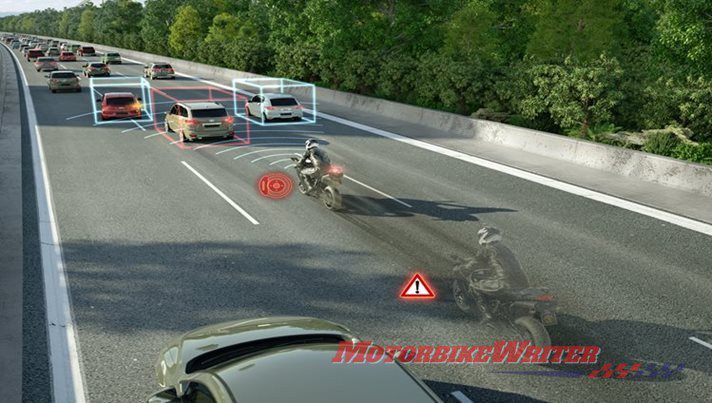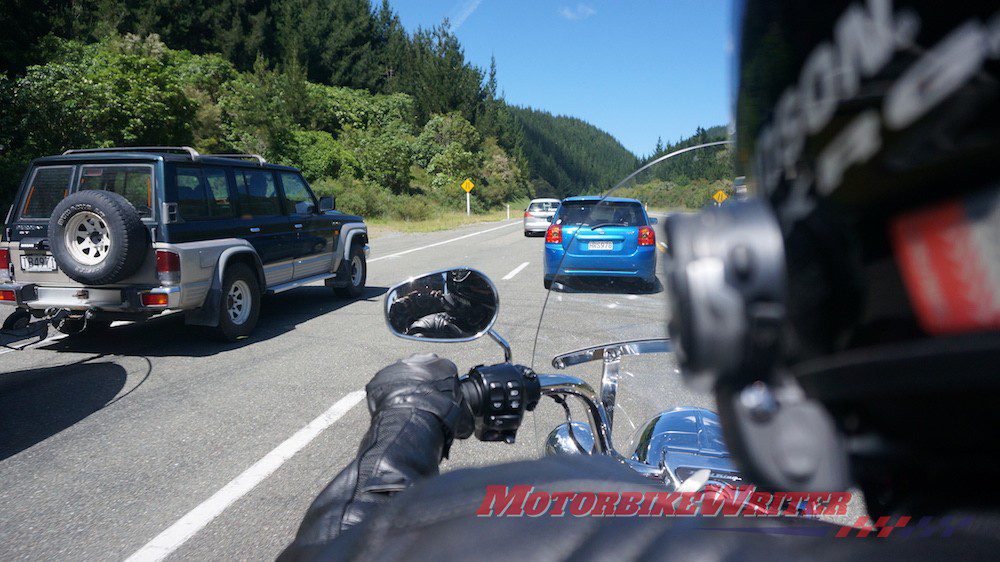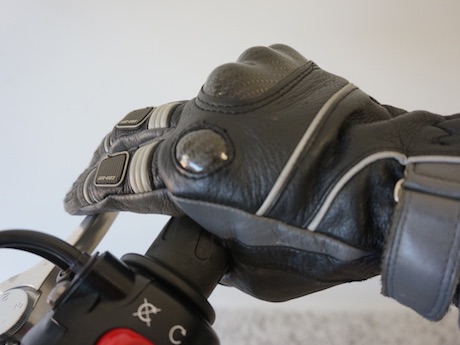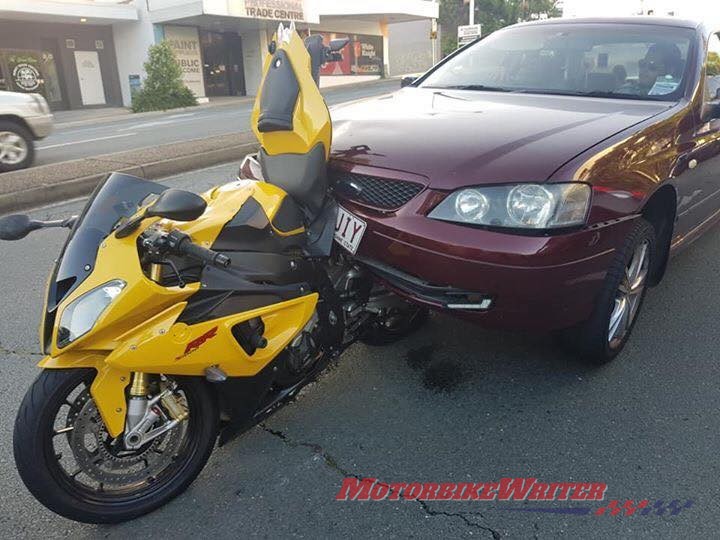Many riders are taught to leave a two or three-second gap between their bike and the vehicle they are a following as a safety buffer. But is it really enough? Is there such a thing as leaving too much space?
How to judge gap
We are taught to use a visible roadside reference to determine our following distance.
It works like this: As the vehicle in front passes a landmark (such as a light post, sign or tree), we start counting “1000, 2000, 3000” by which time our bike will pass the same roadside landmark.
That’s a three-second gap. If it’s raining, add another couple of seconds.
It’s much easier than trying to estimate distance and it’s easier, because the distance naturally increases the faster you are riding.
Gap variables
However, is a two-second or three-second gap enough?
The problem is there are several variables.
First is the vehicle in front. If it’s a late-model car, it will stop quite quickly.
Cars usually have better stopping power than motorcycles because of their increased tyre contact patch with the road. Click here for more on this subject. So maybe add a second or two.

Older cars, trucks, vans and laden utes cars will not be able to stop as quickly, so two seconds might be fine. However, be aware of any unsecured loads that could fall off a truck or ute.
Second is your motorcycle. How are its brakes?
There is a substantial difference between motorcycle stopping abilities, depending on many variables such as weight, tyres, suspension, brake discs, callipers, ABS, linked brakes and even the brake lines (hydraulic or cable).
(ABS may not make some riders stop any shorter, but it will allow the rider to steer out of harm’s way.)
And then there’s the skill of the rider. Have you been taught the correct way to use the brakes? Click here for MotoDNA emergency braking tips and go out and practise!
(Go to 30-second mark of the video)
Assessing space
To assess your bike’s braking abilities, find a quiet piece of road or carpark to practise your emergency stopping.
Take a friend and get them to measure how far it takes you to stop from various speeds.
Once you have the distance for each speed, compare it with how far you travel at that speed.
For example, at 100km/h you travel 28m a second, so your two-second gap leaves 56m to safely stop and three seconds leaves 84m.
Here is a list showing distance travelled at various speeds with stopping distances for 2- and 3-second gaps:
- 40km/h = 11m/second = 22m (2second gap) = 33m (3 seconds)
- 50km/h = 13.8m/s = 27.6m (2s) = 41.4m (3s)
- 60km/h = 16.6m/s = 33.2m (2s) = 49.8m (3s)
- 70km/h = 19.4m/s = 38.8m (2s) = 58.2m (3s)
- 80km/h = 22.2m/s = 44.4m (2s) = 66.6m (3s)
- 90km/h = 25.0m/s = 50.0m (2s) = 75m (3s)
- 100km/h = 27.7m/s = 58.4m (2s) = 83.1m (3s)
- 110km/h = 30.5m/s = 61.0m (2s) = 91.5m (3s)
- 120km/h = 33.3m/s = 66.6m (2s) = 99.9m (3s)
- 130km/h = 36.1m/s = 72.4m (2s) = 108.3m (3s)
If your measured stopping distance at those speeds is more, then you may need to consider lengthening your gap.
Don’t overdo gap
However, don’t be too alarmed and add several seconds, because there are two more variables to consider.
The first is the fact that if you leave a big gap between you and the vehicle in front, another vehicle is likely to slot in which means you have to pull back even further.
If they jump in suddenly and then stomp on the brakes, it’s only creating more danger.
Also, the vehicle in front will not stop immediately when they apply their brakes. They also have stopping distances that vary with speed.
Then there’s the whole other problem of tailgaters and road ragers hitting us from behind! So don’t just concentrate on the road aead, but also check your mirrors.




